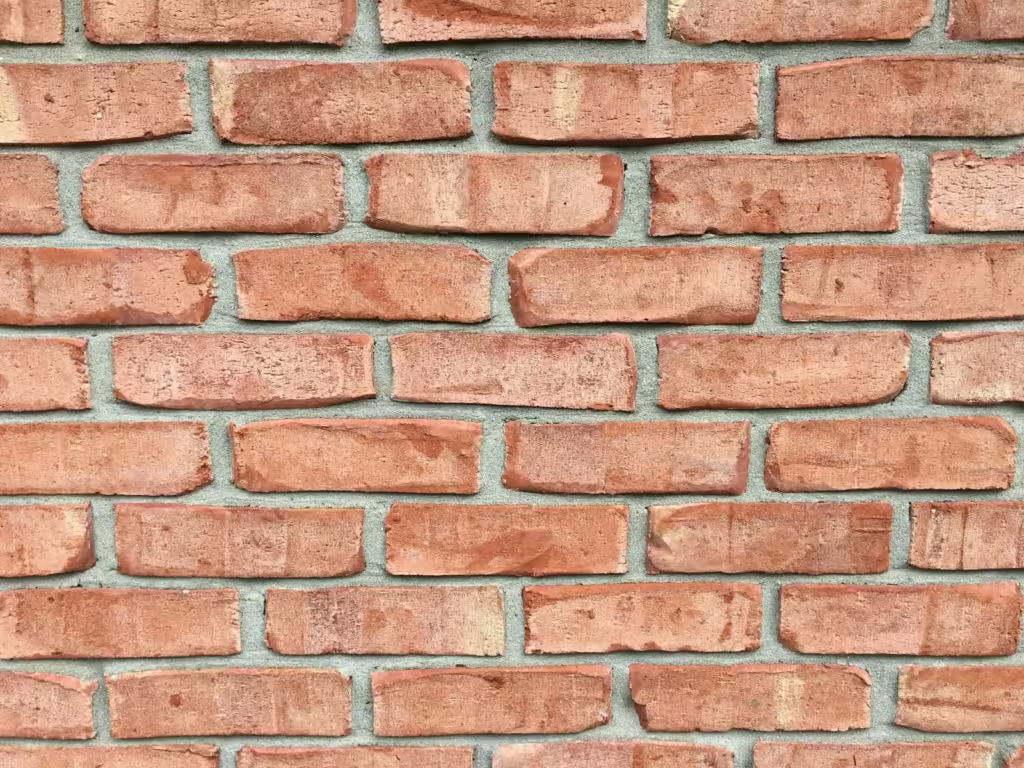Building materials play a pivotal role in construction, influencing durability, cost, and environmental impact. Among the most commonly used materials are red bricks and solid concrete blocks. Red bricks, one of the oldest building materials, are primarily made from clay, while solid concrete blocks are precast from cement and aggregates. This article explores the key differences between these materials to help make informed decisions in construction.

1. Raw Materials
The composition of red bricks and solid concrete blocks significantly impacts their properties and applications.
- Red Bricks: These bricks are made using lime, clay or alumina, sand, iron oxide, and magnesia. The sand used in their production is typically sourced locally, contributing to cost-effectiveness but varying in quality.
- Solid Concrete Blocks: These blocks are manufactured using a mix of ordinary Portland cement, sand, gravel, and water. Fly ash, an industrial byproduct, can sometimes replace fine sand, making production more sustainable.
2. Properties
The dimensions of red bricks and solid concrete blocks differ considerably, affecting construction techniques and efficiency.
- Red Bricks: Available in both modular sizes (e.g., 190x90x90 mm) and non-modular sizes (e.g., 230x110x70 mm), red bricks offer versatility for various construction needs.
- Solid Concrete Blocks: Standard sizes of these blocks range in length from 400 to 600 mm, with heights of 100 or 200 mm and widths between 50 to 300 mm. Sizes often vary by manufacturer, allowing customization for specific projects.
3. Compressive Strength
Strength is a critical factor in determining a material’s suitability for load-bearing applications.
- Red Bricks: The compressive strength of red bricks ranges between 3.5 to 35 N/mm², depending on their class and quality.
- Solid Concrete Blocks: These blocks typically have a compressive strength of 4 to 5 N/mm², influenced by the grade of cement used.
4. Dry Density
The density of building materials affects their weight and structural implications.
- Red Bricks: Dry density varies from 1600 to 1920 kg/m³, depending on the brick’s class.
- Solid Concrete Blocks: With a density range of 1800 to 2500 kg/m³, these blocks are generally heavier than red bricks, providing better structural stability.
5. Water Absorption
Excessive water absorption can weaken building materials over time.
- Red Bricks: It is recommended that their water absorption should not exceed 20% of their weight.
- Solid Concrete Blocks: These blocks must have a water absorption value of less than 10%, ensuring better durability in wet conditions.
6. Thermal Conductivity
Thermal performance affects energy efficiency in buildings.
- Red Bricks: These bricks have a thermal conductivity ranging from 0.6 to 1 W/mK, offering moderate insulation.
- Solid Concrete Blocks: With thermal conductivity values between 0.7 and 1.28 W/mK, they provide slightly higher insulation levels compared to red bricks.
7. Environmental Impact
Sustainability is a growing concern in the construction industry.
- Red Bricks: The production of red bricks relies on clay, a natural resource, which depletes fertile topsoil. Additionally, their manufacturing process emits a significant amount of carbon dioxide, contributing to environmental degradation.
- Solid Concrete Blocks: These blocks have a lower carbon footprint during production, especially when fly ash is used as a substitute for fine sand.
8. Mortar Consumption
The amount of mortar used directly impacts construction costs and time.
- Red Bricks: Due to their irregular surface, red bricks require more mortar during construction.
- Solid Concrete Blocks: These blocks have flat, even surfaces that significantly reduce mortar consumption, making construction more efficient.
9. Water Usage
Curing is an essential process for both materials, affecting water consumption.
- Red Bricks: Require a moderate amount of water for curing.
- Solid Concrete Blocks: Curing these blocks over 7 to 14 days demands a higher amount of water compared to red bricks.
10. Cost
Cost considerations often dictate material choices in construction.
- Red Bricks: Individually, red bricks are cheaper, but their overall cost is higher due to increased mortar usage and construction time.
- Solid Concrete Blocks: These blocks are more expensive per unit but require less mortar and fewer blocks to cover the same area, reducing overall costs.
11. Uses
The applications of red bricks and solid concrete blocks vary based on their properties.
- Red Bricks: These are widely used for structural purposes such as constructing buildings, foundations, arches, pavements, and bridges. Their aesthetic appeal also makes them suitable for landscaping, facing works, and other architectural designs.
- Solid Concrete Blocks: Known for their versatility, they are used in load-bearing and non-load-bearing walls, partition walls, retaining walls, chimneys, fireplaces, and garden walls. They also act as backing for piers and other facing materials.
Both red bricks and solid concrete blocks have distinct advantages and disadvantages. Red bricks offer traditional charm and versatility, while solid concrete blocks provide strength, efficiency, and a lower environmental impact. The choice between the two depends on specific project requirements, such as cost, structural needs, and sustainability goals. Understanding these differences ensures the selection of the most appropriate material for successful construction.
